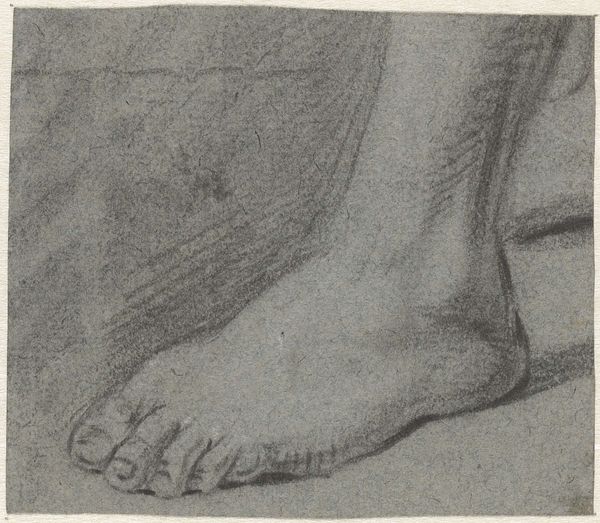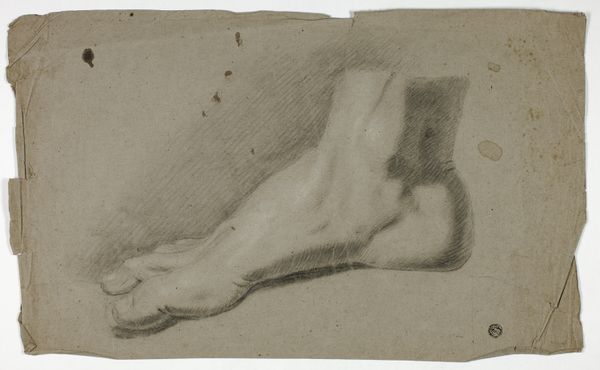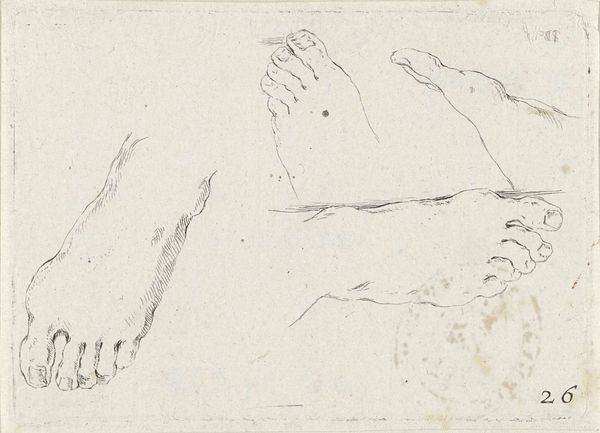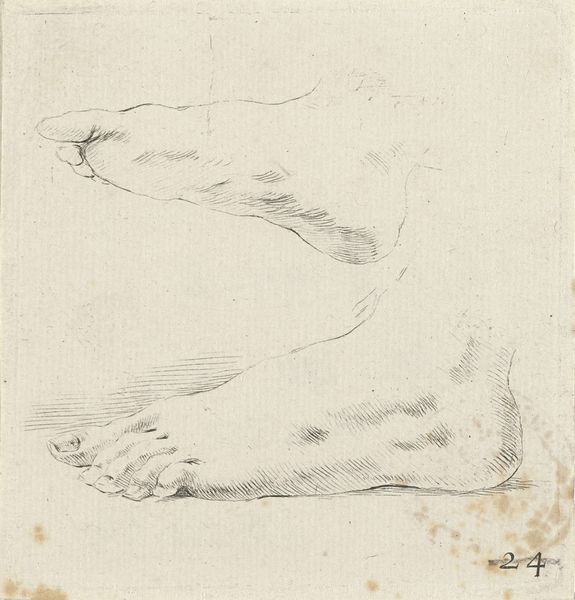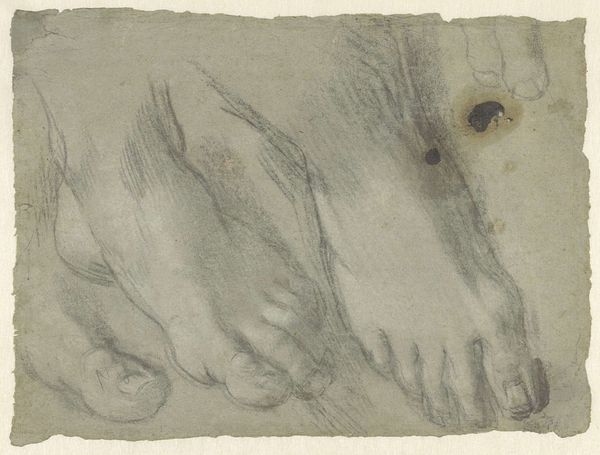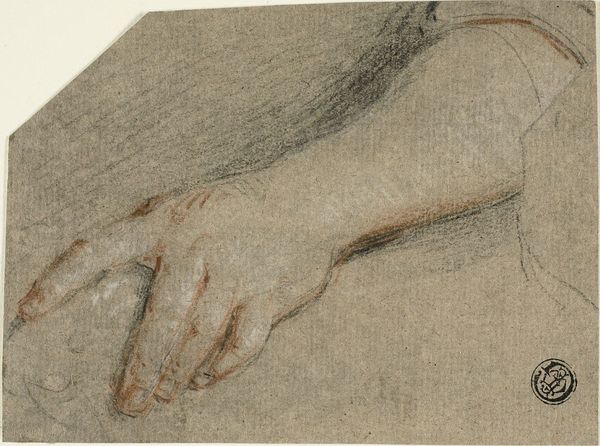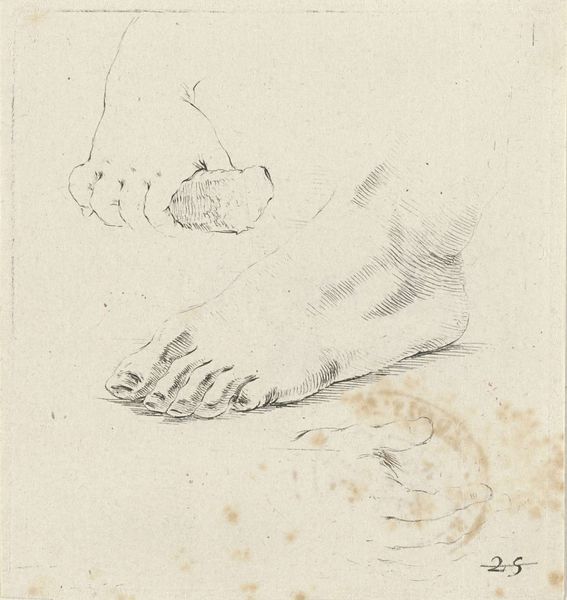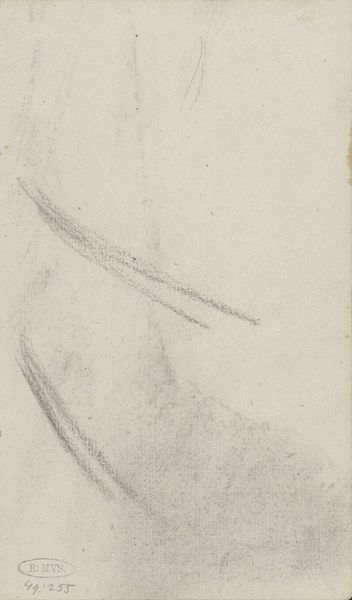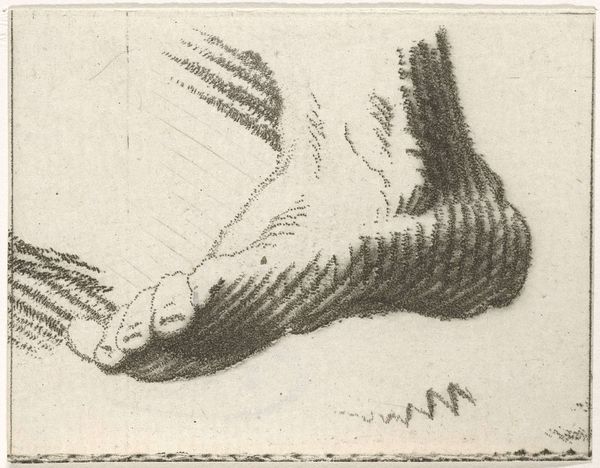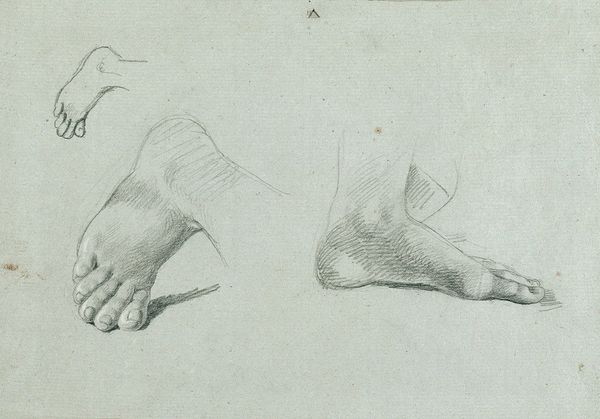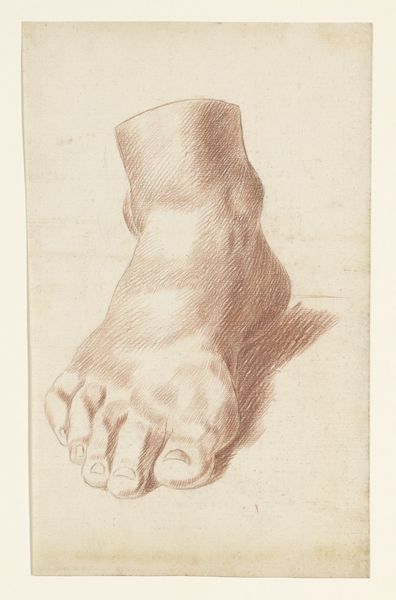
drawing, dry-media, pencil
#
portrait
#
pencil drawn
#
drawing
#
pencil sketch
#
charcoal drawing
#
figuration
#
dry-media
#
pencil drawing
#
pencil
#
pencil work
#
academic-art
#
realism
Dimensions: height 62 mm, width 79 mm
Copyright: Rijks Museum: Open Domain
Curator: I'm immediately drawn to the subtlety of this piece, the delicate shading giving a surprisingly soft and almost vulnerable quality. Editor: Agreed. And standing before “Studie van een linkervoet,” or "Study of a Left Foot," a pencil drawing dating back to sometime between 1770 and 1825, one can sense the artist's careful observation. Do you find it remarkable that such attention was lavished upon, quite literally, the most grounded part of the human form? Curator: Absolutely. The foot, often overlooked, bears the weight of movement, labor, and perhaps social stratification. Consider the context: Was this foot intended to represent the working class, perpetually toiling, or someone of leisure? Editor: The imagery itself evokes a kind of classical tradition. We see the foot presented almost as a sculptural fragment. I think of the symbolic weight the foot carries across cultures. We’ve got Achilles’ heel representing vulnerability and feet washing rituals of cleansing and respect. It acts as an anchoring foundation in symbolic terms. Curator: And consider who traditionally held positions of power and access to resources for artistic training during this period. The accessibility of art education— or the lack thereof— largely dictated whose bodies and experiences would be deemed worthy of artistic representation. This rendering possesses a universal quality, yet prompts one to reflect on broader issues. Editor: You raise an interesting point about accessibility. The sketch medium here invites questions about purpose. Was this study for a larger composition? Was this foot inspired by lived reality, or was this some interpretation of Greco-Roman antiquity? I notice, also, how the medium, a simple pencil, belies its rich tonality; observe how different areas catch the light. Curator: Thinking of academic conventions and methods reinforces my earlier thought regarding societal accessibility in education and beyond. This serves as an elegant entry point for discussing inclusivity in art history itself. Editor: A very insightful perspective. The human foot; so unassuming, yet laden with hidden meaning, a subject for both careful study and, hopefully, wider social reflection. Curator: Well put! It really makes one consider the untold narratives walking among us every single day.
Comments
No comments
Be the first to comment and join the conversation on the ultimate creative platform.
